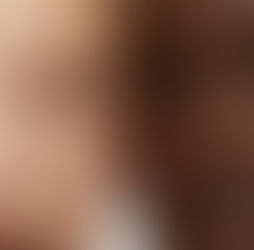Sparkling Tea Is Your Next Must-Try Drink—A Bubbly Trend That’s Ready to Pop Off
- BY ELLE NKOSI

- Apr 29
- 4 min read
Updated: Apr 30

There’s a new bottle on the table, and it’s not what you think. Enter: sparkling tea—the effervescent, jewel-toned darling of the low- and no-alcohol scene that’s making even seasoned wine lovers raise a brow and pour a glass. With its fine bubbles, sophisticated flavour layers, and antioxidant-rich profile, this is not your average iced tea. In fact, it's not even in the same league.
Born from Michelin-starred ambition and somm-level expertise, luxury sparkling tea is steadily bubbling its way to the top of every who’s-who drinks list—and it's doing so with grace. Think: the elegance of a vintage Champagne, minus the booze, plus the wellness perks.
What Is Sparkling Tea, Exactly?
Sparkling tea is exactly what it sounds like—but so much more: high-quality tea that has been brewed, blended, and carbonated to create a fizzy, flavour-forward beverage. But don't mistake it for your average iced tea with bubbles. This is a category-defining drink, somewhere between Champagne, kombucha (minus the funk), and the most aromatic cup of tea you’ve ever had.
The teas used range from white and green to black and oolong, often paired with floral, fruity, or spiced botanicals. After the tea is cold-brewed for hours to maximise nuance without bitterness, it’s carbonated and bottled—sometimes fermented, sometimes infused with fruit extracts or floral notes. The result? A luxurious, non-alcoholic experience that’s as celebratory as it is complex.
Beyond the impressive depth of flavour, there’s substance too. Tea is naturally rich in polyphenols, the antioxidants your skin and cells will thank you for. Glowier complexion? Better sleep? A fresher morning-after? It’s not just hype—it’s science.
Advertisement
A Bit of (Bubbly) History
Though sparkling tea may feel like a very-now trend, its roots trace back to 2017, when Michelin-starred sommelier Jacob Kocemba from Denmark created the first version as a solution to a recurring problem in fine dining: what to serve guests who didn’t drink alcohol that still felt luxurious.
Partnering with business developer Bo Sten Hansen, the Copenhagen Sparkling Tea Company was born—and quickly started showing up on wine lists at some of Europe’s most elite restaurants. Think: elegant flutes filled with rose-coloured effervescence and complex, floral aromas rivaling that of a well-aged Brut Rosé.
Since then, sparkling tea has bloomed into an entire movement, with a growing number of brands worldwide crafting small-batch, sustainably sourced, design-led drinks that make "no alcohol" feel like a stylish choice—not a sacrifice.
A Post-Lockdown Palate Shift

If the past few years taught us anything, it’s that intentional living is officially in. Gen Z is drinking less, curiosity around low-ABV living is rising, and sober-curious culture is here to stay. With booze-free wine, cider, and spirits flooding the market, sparkling tea is comfortably carving out its own, dare we say, chicer niche.
It’s fizzy, complex, and versatile—but above all, it feels like a celebration. A glass of sparkling tea doesn’t scream “I’m skipping out.” It whispers “I’m elevating.” Whether you're ditching alcohol for health, mindfulness, or just for the vibe, this drink delivers the drama without the downfall.
Advertisement
Pairing Sparkling Tea Like a Sommelier
Pairing food with sparkling tea is not just possible—it’s art. Sparkling tea plays well with food—very well. Much like a fine wine, it can elevate the right dish, taking you from amuse-bouche to dessert with effortless flair. Whether you're planning a candlelit dinner, a long table brunch, or a casual grazing night in, there's a tea for every mood and bite.
Light & floral (like white tea with jasmine): Ideal with sushi, fresh salads, or delicate dumplings.
Spiced & robust (like oolong with cinnamon or rooibos blends): Perfect with curries, Thai noodles, or Moroccan tagines.
Fruity & zesty (with citrus or berries): A dream with creamy cheeses, desserts, and summer tartlets.
And if you’re indulging in dessert, opt for a glass alongside cheesecake, macarons, or even a dense chocolate tart. The tea’s acidity lifts the richness in all the right ways.

How to Serve It Right
Occasion-wise, sparkling tea belongs wherever celebration is calling—birthdays, brunches, bridal showers, or even a self-care Sunday.
Chill it slightly colder than Champagne—between 41 to 45°F (5 to 7°C)—to preserve its structure. While flutes are fabulous, opt for a white wine glass if you really want to experience the full aromatic bouquet. (Yes, you can swirl it.)
Presentation-wise, garnish with a single edible flower, twist of citrus, or a sprig of fresh mint or rosemary. These aren’t just visual accents—they subtly enhance the aromatic experience too.
Final Sip?
In a culture obsessed with what’s next, sparkling tea is everything the modern drinker craves: beauty, sophistication, health perks, and a refreshing break from the booze-centric norm. It’s not about what you’re giving up—it’s about what you’re gaining.
So the next time you’re reaching for a bottle to pop, make it one that fits your lifestyle and your taste. The fizz, the flavour, the finish—sparkling tea is the drink trend that’s ready to bubble over. And honestly? We’re more than here for it.


























































